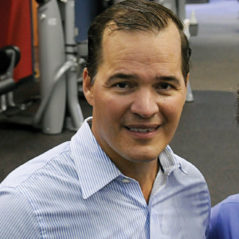In Hospital Strategies
In-Hospital Cardiac Arrest Strategies
Planning the in-hospital resuscitation response prior to an event can positively affect resuscitation metrics such as teamwork and communication, quality of chest compression rate and depth and time to defibrillation, as well as return of spontaneous circulation (ROSC).
Here are a few strategies to assist with your in-hospital cardiac arrest (IHCA) response:
“A multidisciplinary team also found that the optimal number of essential providers during an IHCA event was 13.”
New Leadership Structure
A performance improvement project at the University of Pennsylvania included testing a new leadership structure during IHCA events. The physician was responsible for the medical care of the patient, “including the underlying etiology, differential diagnosis, and adherence to ACLS recommendations,” wrote Marion Leary, MSN, RN, for “In-Hospital Cardiac Arrest.”
In addition, the nurse leader controlled the room, assigning roles to necessary providers and ensuring adherence to BLS guidelines. This key shift in nurse leader responsibilities resulted in improved team performance.
“Allowing the nursing lead to focus first on role assignment, then on subsequent subtasks, increases team function and allows the physician lead to determine the underlying etiology of the cardiac arrest and communicate with other providers in the room to determine the next course of action,” Leary wrote.
Throughout the testing, a multidisciplinary team also found that the optimal number of essential providers during an IHCA event was 13. This number might be different at your institution, but keep it in mind as a helpful benchmark.
Team Communication
It’s not only important to optimize the number of providers in the room during an IHCA events; it’s also important to ensure optimal communication among those providers. Faulty communication can hinder team performance and even CPR quality. Instead, consider resuscitation training programs that can be done as a team, which can help you spot ways to improve communication.
High-Quality CPR
Once the code team and its communication are optimized, the focus should shift to techniques like high-quality CPR.
“Immediate recognition of cardiac arrest and prompt high-quality CPR is essential to survival, as the likelihood of survival decreases 10% for every 1 minute the patient goes without CPR,” Leary wrote.
Prompt administration of high-quality CPR can double, even triple, patient survival. Yet some HCPs don’t perform CPR according to established guidelines. The solution: using feedback devices, especially those that provide audio and/or visual feedback during compressions, to improve compression depth and rates.
Debriefing
Studies show that debriefing after an IHCA event can improve code team performance, CPR quality and the overall quality of the code event, according to Leary.
Effective debriefings require teams to establish CPR/code quality improvement programs to capture CPR quality and code event metrics. Those metrics can then be measured against similar hospitals, helping institutions identify opportunities for improvement.
“CPR feedback and debriefing can dramatically improve patient survival respectively; however, when debriefing is used in combination with CPR feedback, significant improvement in performance is achieved,” according to Leary.
Targeted Temperature Management
Post-arrest brain injury is common in IHCA events. In some cases, targeted temperature management (TTM) is the optimal treatment because, as Leary wrote, it “nearly doubles survival and neurologic recovery in out-of-hospital cardiac arrest (OHCA) patients whose arrest was caused by a shockable rhythm.”
Yet identifying which patients should receive TTM—and at what temperature—is complex.
“Since most IHCA events are caused by nonshockable rhythms, the question of whether to initiate TTM in the in-hospital setting needs to be considered,” Leary wrote.
Current American Heart Association guidelines recommend TTM for both out-of-hospital and in-hospital cardiac arrest events

“What does one say or do for somebody who has saved your life? ‘Thank you’ does not do it justice,” Rupp says. Now 45, he will be forever grateful for the opportunity to see his children grow up.
Questions?
Contact us with your in hospital strategy questions and one of our experts will get back with you.